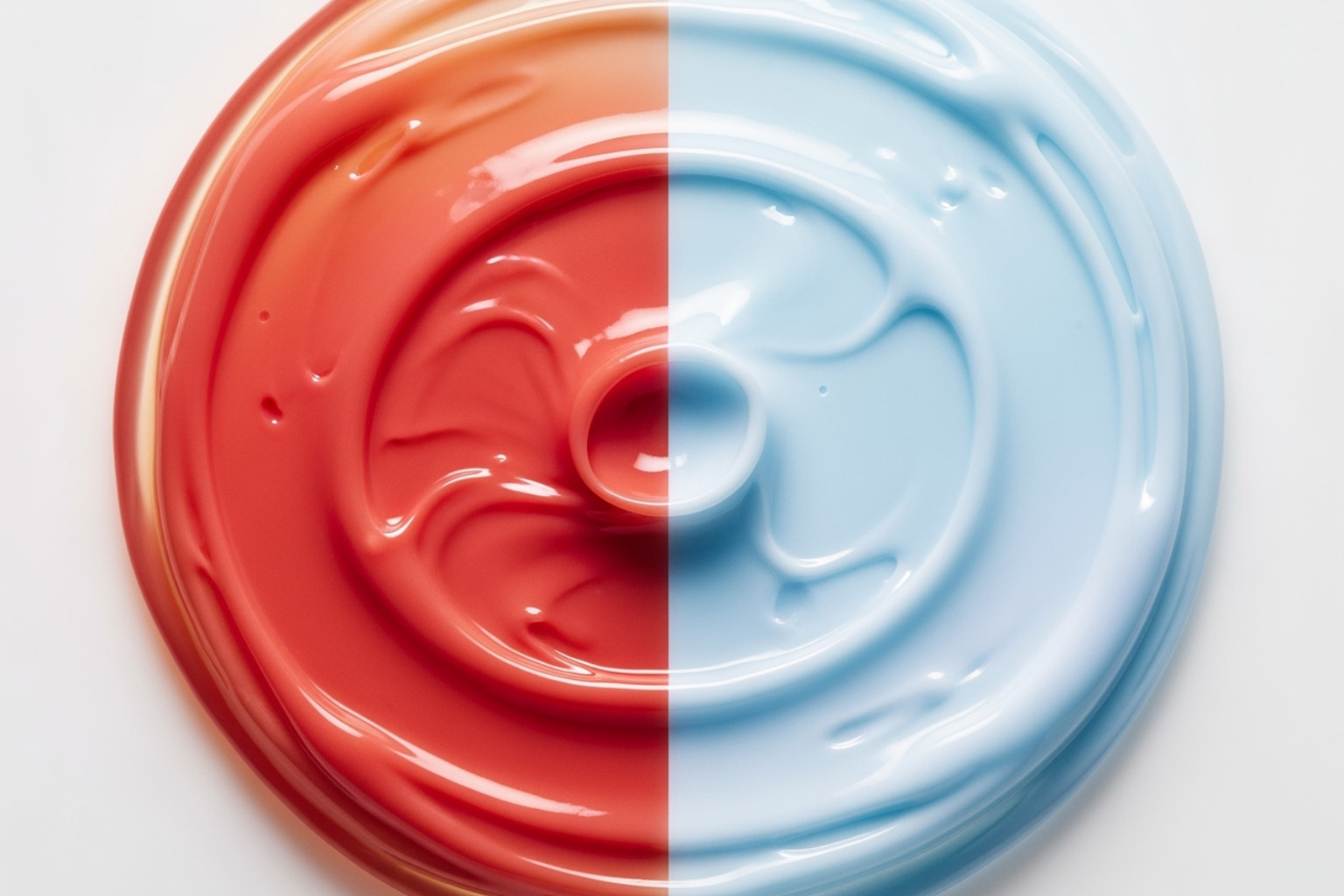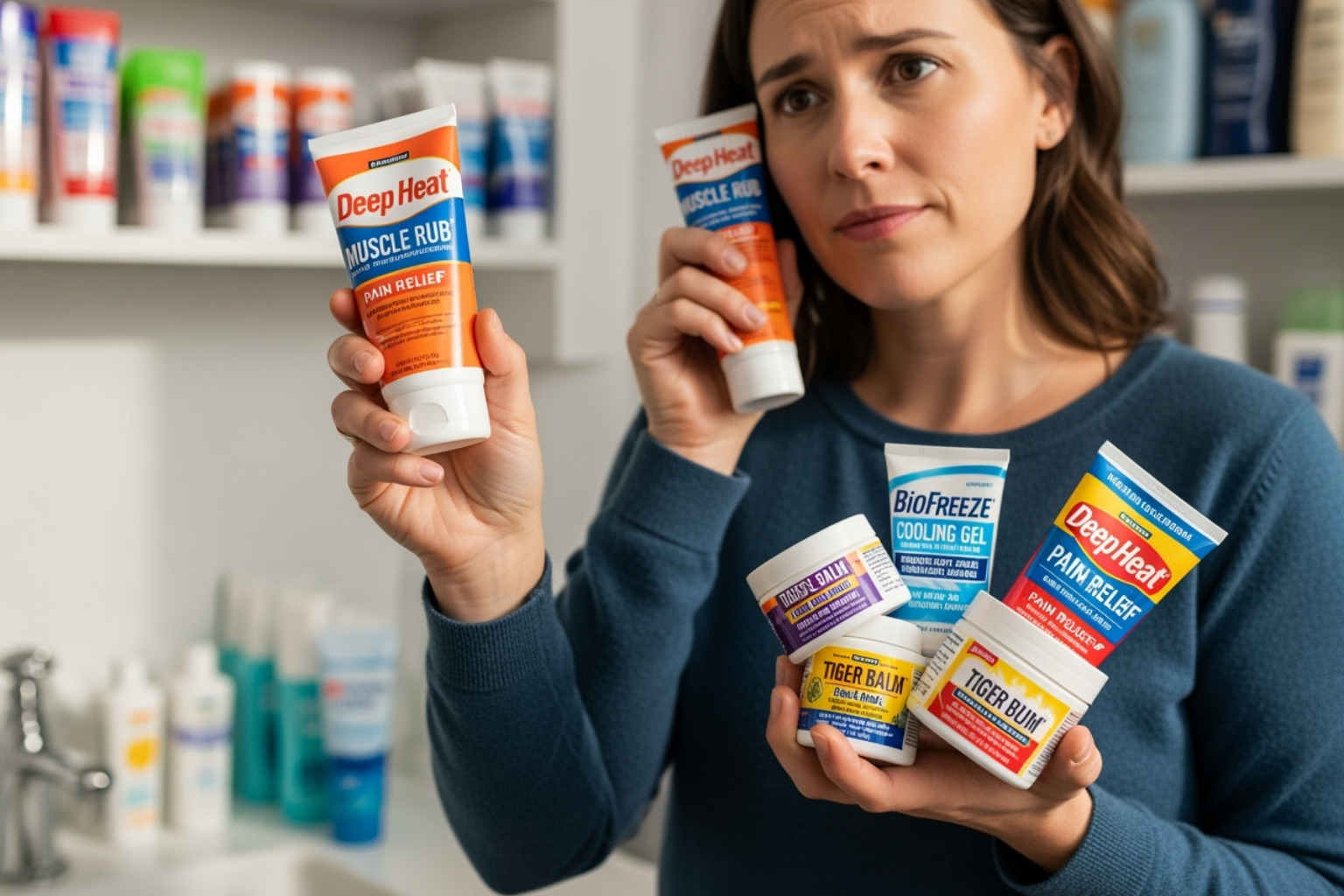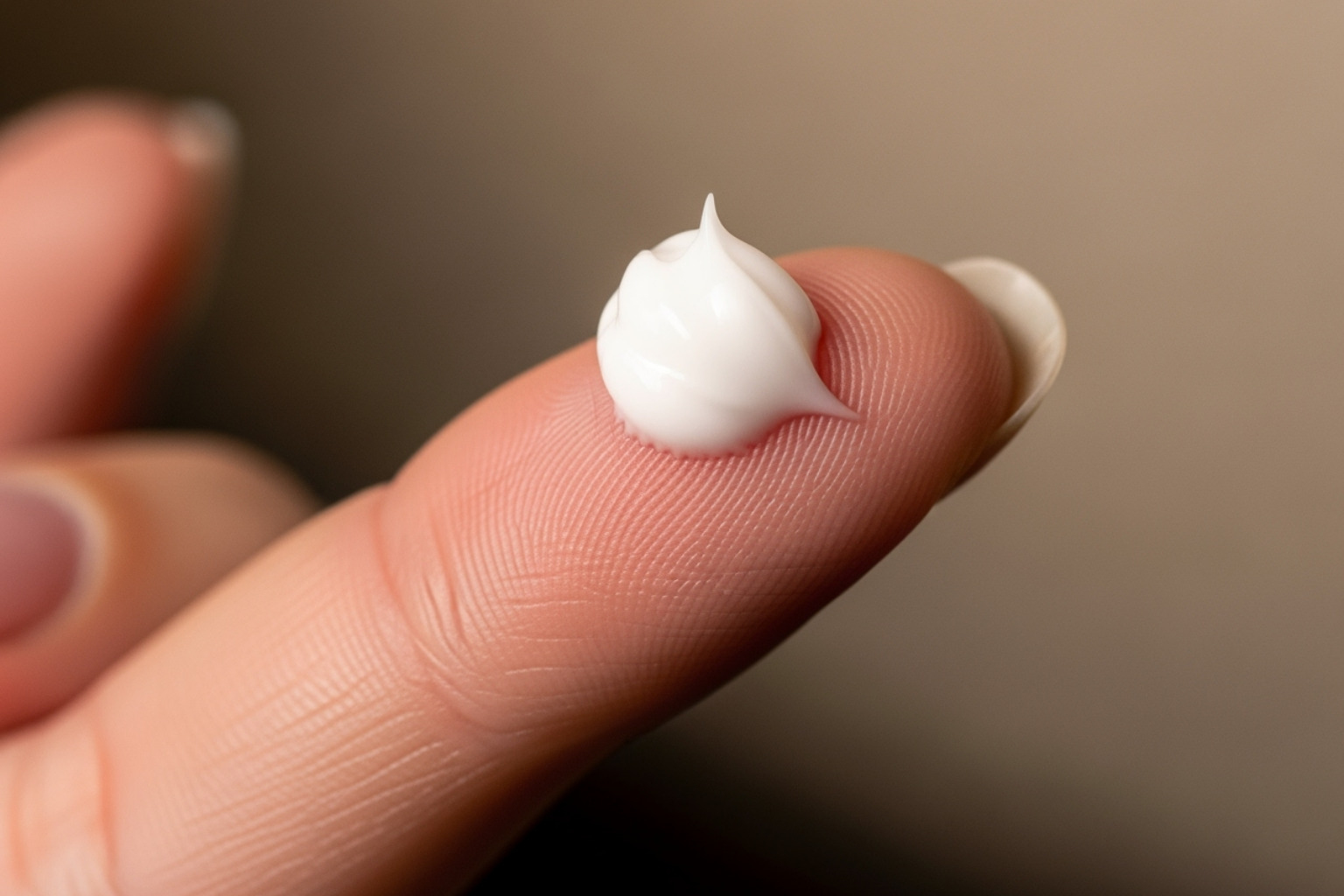Why Muscle Rub Cream Matters for Active People
Muscle rub cream is a topical product designed to soothe sore muscles, joint discomfort, and minor aches. It uses active ingredients like menthol, camphor, or lidocaine to create counterirritant sensations or block pain signals directly at the source. These creams offer fast-acting, localized relief without the systemic side effects associated with oral pain medications.
Quick Facts About Muscle Rub Creams:
- How they work: Active ingredients penetrate the skin to reduce inflammation, block pain signals, or create cooling/warming sensations that distract from deeper pain.
- Common uses: Post-workout soreness, arthritis pain, backaches, sprains, strains, and joint stiffness.
- Main types: Warming creams (capsaicin), cooling creams (menthol), medicated creams (lidocaine, NSAIDs), and natural formulas (arnica, essential oils).
- Application: Apply a thin layer to clean, dry skin 3-4 times daily and massage until absorbed.
- Market growth: The topical pain relief market is a significant and growing industry, projected to reach nearly $15 billion by 2030.
Whether you're an athlete dealing with post-workout soreness or someone managing chronic discomfort, understanding how different muscle rubs work can help you choose the right product. The science is based on creating sensations that override pain signals. For example, menthol is a very common ingredient that creates a cooling sensation, while others like camphor provide warming relief.
At Neuropasil, our advanced formula uses natural ingredients like menthol, aloe, and urea in our muscle rub cream to provide fast-acting relief. Our mission is to help people across North America manage their pain effectively and get back to living fully.
How Muscle Rub Creams Work: The Science of Topical Relief
When you apply a muscle rub cream, it intercepts pain messages that your nerves send to your brain, providing targeted relief right where you need it. This process is often explained by the Gate Control Theory of Pain, which suggests that non-painful sensations like warmth or coolness can "close the gate" on pain signals, preventing them from reaching the brain.
One of the greatest benefits of muscle rub creams is localized relief. Unlike oral medications that affect your entire system, these creams focus their action on the specific sore area, which often means fewer systemic side effects. This is achieved through several types of active ingredients: counterirritants, which create distracting sensations; anesthetics, which numb the area; and anti-inflammatories, which reduce swelling.
Common Active Ingredients
When you look at a tube of muscle rub cream, you'll find a variety of active ingredients responsible for its effects. Here are some of the most common agents you'll encounter:
Menthol: A superstar in topical relief, menthol provides a cooling sensation by stimulating cold receptors in the skin. This acts as a counterirritant, distracting your brain from deeper pain signals and offering fast-acting relief.
Camphor: Often paired with menthol, camphor typically provides a warming sensation. This gentle warmth helps increase blood flow to the area, which can relax stiff muscles and promote healing. Camphor also has its own analgesic (pain-relieving) and anti-inflammatory properties.
Methyl Salicylate: Known for its distinct wintergreen scent, this ingredient is another powerful counterirritant. It functions similarly to aspirin and creates a warming sensation that helps divert your attention from muscle aches and joint discomfort.
Lidocaine: This is a local anesthetic that numbs the area where it's applied. Instead of just creating a distraction, lidocaine blocks nerve signals from reaching the brain, making it highly effective for nerve-related pain.
Diclofenac: A non-steroidal anti-inflammatory drug (NSAID), diclofenac reduces pain and inflammation directly at the source. It works by inhibiting prostaglandins, substances in the body that cause inflammation, making it a great choice for conditions like arthritis.
Capsaicin: Derived from chili peppers, capsaicin creates a strong warming sensation. With regular use, it can reduce the chemical messenger for pain (Substance P), decreasing pain perception over time.
Natural Agents (Arnica, Boswellia, Hemp/CBD): Many creams use plant-based ingredients. Arnica is celebrated for its anti-inflammatory properties, making it ideal for bruises and soreness. Boswellia (Indian frankincense) is also known for its potent anti-inflammatory effects. Hemp/CBD is another popular ingredient users report helps with inflammation and pain.
Supporting Ingredients (Aloe Vera, Urea): Ingredients like Aloe Vera soothe and hydrate the skin while helping to carry other active ingredients. Urea, a key component in Neuropasil's formula, aids skin penetration and hydration, helping active ingredients absorb more effectively to improve the cream's potency.
Comparing Types of Muscle Rub Cream
Not all muscle rub creams are the same, and the best choice depends on your specific needs. Understanding the main categories can help you steer the pain relief aisle with confidence.
![TABLE] comparing Warming vs. Cooling vs. Medicated vs. Natural Creams based on Key Ingredients, Sensation, and Best Use Case - muscle rub cream infographic comparison-2-items-formal](https://images.bannerbear.com/direct/4mGpW3zwpg0ZK0AxQw/requests/000/107/610/774/LWXrA1qRoQvbPya8QypMJegBj/6afb0ae663d2b65e9da038cd29dc5d7183e98c25.jpg)
Warming vs. Cooling Creams
The sensation a cream creates is a key part of its therapeutic effect.
Warming creams use ingredients like capsaicin, camphor, or methyl salicylate to generate heat and increase blood flow. This increased circulation is excellent for loosening stiff muscles, easing chronic pain, and preparing muscles for activity. They are often used for persistent back pain or pre-workout application.
Cooling creams rely on ingredients like menthol to create an icy sensation. This coolness stimulates the skin's cold receptors, distracting the brain from deeper pain signals. These formulas are ideal for fresh injuries and acute pain, such as a sprain or after workout soreness, as the effect mimics applying ice to numb the area and provide immediate relief. Our Neuropasil creams harness the power of menthol for this fast-acting, cooling effect.

Medicated vs. Natural Muscle Rub Cream
Your choice between medicated and natural formulas may depend on pain severity and personal preference.
Medicated creams contain pharmaceutical-grade ingredients for potent pain relief. These include anesthetics like lidocaine, which numbs nerves, or NSAIDs like diclofenac, which targets inflammation. These products are clinically formulated for specific conditions like severe arthritis or nerve pain and offer powerful, targeted results.
Natural creams use a plant-based approach. They feature ingredients like arnica for bruising, boswellia for inflammation, and essential oils. These formulas appeal to those wishing to avoid synthetic ingredients. While they may not provide the intense numbing of medicated options, many people find them effective for general muscle aches and everyday discomfort. At Neuropasil, we offer natural creams combining aloe, urea, and menthol for relief without harsh chemicals, which is one of the best ways to relieve muscle aches with physical activity and healthy living.
Creams, Gels, Balms, and Patches
The product's format affects its application and feel.
- Creams: Versatile and popular, they absorb well without being greasy, striking a good balance for most uses.
- Gels: These have a lighter, water-based consistency that absorbs almost instantly with no residue, perfect for quick application. For more on this, see our guide to gel muscle pain relief.
- Balms and Ointments: These thicker, oil-based formulas absorb slowly, providing a long-lasting sensation ideal for deep tissue massage.
- Patches: Adhesive strips that offer a hands-free experience by slowly releasing active ingredients over several hours for continuous, mess-free relief.
Choosing the Right Cream for Your Pain
With so many muscle rub cream options, how do you choose? The key is to match the product to your specific type of pain. By identifying your discomfort and reading ingredient labels, you can find the relief you need.

Match the Cream to Your Condition
Different types of pain respond best to different ingredients. Here’s a guide to help you match a cream to your condition:
Sore Muscles After Exercise: For delayed onset muscle soreness (DOMS), cooling creams with menthol are an excellent choice. The refreshing chill soothes overworked muscles. Neuropasil users find our blend of menthol, aloe, and urea ideal for quick muscle recovery and to reduce muscle soreness after workout.
Arthritis Joint Pain: Look for ingredients that fight inflammation. Creams with the NSAID diclofenac are specifically formulated for arthritis. Natural options include ingredients like arnica, boswellia, frankincense, or myrrh to ease joint discomfort.
Backache: Both warming and cooling rubs can help. Warming creams with camphor and methyl salicylate can relax tight back muscles. For deeper aches or shoulder muscle pain, creams with a blend of anti-inflammatory ingredients can be very effective.
Sprains and Bruises: For acute injuries, a cooling sensation can help manage initial swelling and pain. The natural ingredient arnica is particularly well-known for its ability to help reduce bruising and inflammation.
Nerve Pain: For tingling, burning, or shooting sensations, you need ingredients that target nerves. Lidocaine-based creams are effective because they numb nerve endings. At Neuropasil, our creams are specifically designed with menthol, aloe, and urea to gently soothe aggravated nerves, providing targeted relief for conditions like neuropathy and sciatica.
What to Look for on the Label
Reading the label is key to finding the right muscle rub cream. Here’s what to focus on:
Active Ingredients and Concentrations: Check for key ingredients like menthol, camphor, lidocaine, diclofenac, or arnica. The percentage indicates the strength; a higher concentration usually means a stronger effect.
Scented vs. Odor-Free: Many rubs have a strong medicinal scent. If you prefer something discreet, look for products labeled "Odor-Free" or "Fragrance-Free."
Skin-Soothing Ingredients: Look for additions that are kind to your skin. Aloe Vera is a common moisturizing ingredient. Urea, found in Neuropasil creams, helps hydrate skin and improves the absorption of other active ingredients.
Formulation Claims: If you have sensitive skin or prefer certain formulations, look for labels like paraben-free, cruelty-free, or vegan.
HSA/FSA Eligibility: Check if the product is eligible for purchase with a Health Savings Account (HSA) or Flexible Spending Account (FSA), as many over-the-counter pain relief products qualify.
How to Apply Muscle Rubs for Maximum Effectiveness & Safety
Knowing how to apply your muscle rub cream is just as important as choosing the right one. Proper application ensures you get the most relief while staying safe.

Step-by-Step Application Guide
Follow these simple steps for the best results:
- Start with Clean, Dry Skin: Wash and dry the area to ensure nothing interferes with absorption.
- Perform a Patch Test: If it's a new product, apply a small amount to a discreet area of skin and wait 24 hours to check for any adverse reactions like redness or itching.
- Apply a Thin Layer: A pea-sized amount is often enough for a small area. Using too much won't increase relief and may cause irritation. Apply no more than 3-4 times a day, as directed.
- Massage Until Absorbed: Gently rub the cream into the skin. The massage helps the ingredients penetrate and can provide additional soothing benefits.
- Wash Your Hands Thoroughly: After application, wash your hands with soap and water to avoid accidentally touching your eyes or other sensitive areas.
- Follow Recommended Frequency: Stick to the usage instructions on the label. Overuse can lead to skin irritation.
Precautions and Potential Side Effects
While muscle rub creams are generally safe, it's important to use them correctly and read the product label, following guidance from health authorities like the FDA.
- Normal Sensations vs. Irritation: A mild warming, cooling, or stinging sensation is often normal. However, if you experience severe burning, blistering, or itching, stop using the product and consult a doctor. You can find more information in user reviews on side effects.
- Do Not Apply to Broken Skin: Never use muscle rubs on open wounds, cuts, scrapes, or irritated skin.
- Avoid Sensitive Areas: Keep cream away from your eyes, mouth, and other mucous membranes. If contact occurs, flush with plenty of water.
- Do Not Use with Heat or Bandages: Never apply a heating pad or tight bandage over the area. This can increase absorption and cause severe skin irritation or burns.
- Check with a Doctor: If you are pregnant, breastfeeding, or considering use on children under 18 (especially products with salicylates), consult a healthcare professional first.
- Keep Out of Reach: Store muscle rubs safely away from children and pets. If swallowed, seek immediate medical attention.
Frequently Asked Questions about Muscle Rub Creams
Have questions about muscle rub cream? You're not alone. Here are answers to some of the most common inquiries.
Can you use too much muscle rub cream?
Yes, it is possible to use too much. While it may seem like more cream means more relief, over-application can lead to problems. The active ingredients are potent, and using too much can cause uncomfortable skin irritation, burning, or rashes. In rare cases, some ingredients can be absorbed into the bloodstream, potentially causing systemic side effects. This risk increases if you apply cream to a large area or cover it with a heating pad or tight bandage.
Always follow the package directions for the recommended amount and frequency. If your pain persists, applying more cream is not the solution; it may be time to consult a healthcare professional.
How long does it take for muscle rub to work?
The time it takes to feel relief depends on the active ingredients.
Counterirritants like menthol and camphor provide a near-instant cooling or warming sensation that distracts from pain within minutes.
Anesthetics like lidocaine typically begin to numb the area within 5 to 15 minutes, with the full effect settling in over the next hour.
NSAID creams containing ingredients like diclofenac work differently. They reduce the underlying inflammation, so while you may feel some initial comfort, the primary pain-relieving effect may build over several hours or even a few days of consistent use.
Can I use muscle rub cream for nerve pain?
Yes, certain muscle rub creams can be very effective for nerve pain, but it's crucial to choose one with the right ingredients. Traditional muscle rubs with only counterirritants may offer a temporary distraction, but they don't address the nerve issue directly.
For targeted nerve pain relief, look for creams containing lidocaine, which works by blocking nerve signals to numb the area. This makes it a great choice for localized neuropathy or sciatica.
Additionally, specific natural blends can provide significant comfort. Our Neuropasil creams are formulated with menthol, soothing aloe, and hydrating urea. This combination is designed to provide fast-acting, targeted relief for aggravated nerves, making it a favorite among customers dealing with neuropathy, sciatica, and fibromyalgia. It can also be effective for related conditions like cream for tendonitis. If you have persistent nerve pain, it's always best to consult a healthcare professional for a proper diagnosis.
Conclusion: Finding Your Go-To Muscle Relief
We've explored the science behind muscle rub cream, from how counterirritants work to the targeted power of different active ingredients. Finding the right product doesn't have to be complicated. The key is to understand the ingredients, match the cream to your specific type of pain, and always prioritize safe application.
At Neuropasil, we are dedicated to helping you find comfort and get back to the activities you love. We believe in the power of nature, which is why our creams are crafted to deliver natural, fast-acting relief. Our unique blend of Aloe, Urea, and Menthol is designed to penetrate deeply, offering soothing comfort for everything from post-workout aches to the persistent challenges of nerve pain. Our customers trust Neuropasil for a wide range of issues, including neuropathy, sciatica, joint discomfort, and general aches and pains.
If you're ready to experience the difference that targeted, natural relief can make, we invite you to explore our products. For more insights, be sure to read about the ins and outs of best pain relief creams for muscle pain.
Ready to find your new go-to relief? Visit our website to learn more about Neuropasil:
- Neuropasil Blog
- Neuropasil Homepage
- Neuropasil Nerve Pain Relief Cream (4 oz)
- Neuropasil Nerve Pain Muscle Cream (4 oz, Pack of 2)
- Neuropasil Nerve Pain Muscle Cream (4 oz, Pack of 3)
References
We believe in providing well-researched and reliable information to help you make informed decisions about your health. The insights in this guide were compiled using data from credible health platforms, government agencies, and market research reports.
Here are the sources that helped shape this article:
Cleveland Clinic. (2022). Do Topical Pain Relievers Really Work? Retrieved from https://health.clevelandclinic.org/do-topical-pain-relievers-really-work/
FDA. (2021). OTC Drug Facts Label. Retrieved from https://www.fda.gov/drugs/over-counter-otc-drugs/otc-drug-facts-label
Fortune Business Insights. (2023). Topical Pain Relief Market Size, Share & COVID-19 Impact Analysis... Global Forecast till 2030. Retrieved from https://www.fortunebusinessinsights.com/topical-pain-relief-market-102234
FSA Store. Topical Pain Relief FSA Eligibility. Retrieved from https://fsastore.com/fsa-eligibility-list/t/topical-pain-relief
Healthline. (2022). What Is Gate Control Theory? Retrieved from https://www.healthline.com/health/gate-control-theory
Healthline. (2023). 6 Benefits and Uses of Myrrh. Retrieved from https://www.healthline.com/nutrition/myrrh-benefits
Memorial Sloan Kettering Cancer Center. (2022). Arnica. Retrieved from https://www.mskcc.org/cancer-care/integrative-medicine/herbs/arnica
Memorial Sloan Kettering Cancer Center. (2023). Boswellia. Retrieved from https://www.mskcc.org/cancer-care/integrative-medicine/herbs/boswellia
WebMD. Muscle Rub Cream Topical. Retrieved from https://reviews.webmd.com/drugs/drugreview-61766-muscle-rub-cream













